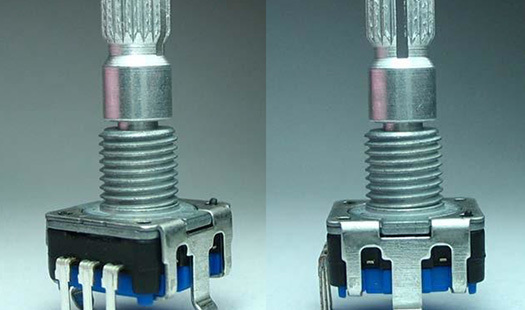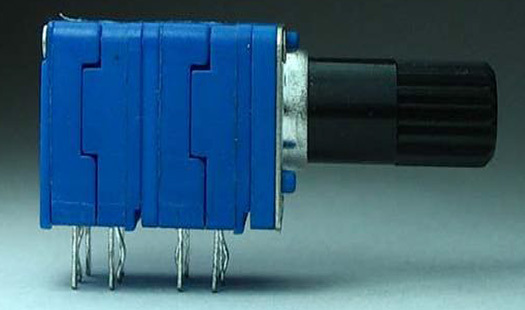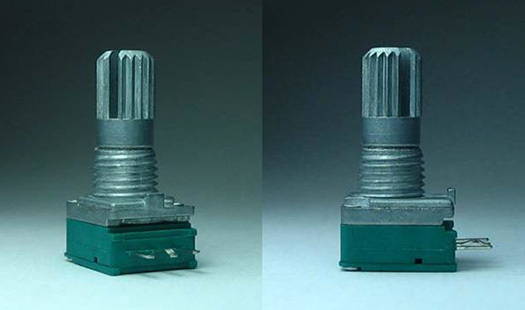Unlocking Precision: What You Need to Know About Cheap Slide Potentiometers
Jun 03,2025
Unlocking Precision: What You Need to Know About Cheap Slide Potentiometers
Table of Contents
1. Introduction to Slide Potentiometers
2. What is a Slide Potentiometer?
3. Types of Slide Potentiometers
4. Applications of Slide Potentiometers
5. Advantages of Cheap Slide Potentiometers
6. How to Choose the Right Slide Potentiometer
7. Maintenance and Care of Slide Potent
Unlocking Precision: What You Need to Know About Cheap Slide Potentiometers
Table of Contents
- 1. Introduction to Slide Potentiometers
- 2. What is a Slide Potentiometer?
- 3. Types of Slide Potentiometers
- 4. Applications of Slide Potentiometers
- 5. Advantages of Cheap Slide Potentiometers
- 6. How to Choose the Right Slide Potentiometer
- 7. Maintenance and Care of Slide Potentiometers
- 8. Frequently Asked Questions
- 9. Conclusion
1. Introduction to Slide Potentiometers
In the realm of electronic components, **slide potentiometers** stand out as versatile and reliable devices utilized in a multitude of applications. These components allow users to adjust resistance levels manually through a sliding mechanism, making them essential in various electronic circuits. Whether you are an engineer, a hobbyist, or a DIY enthusiast, understanding the nuances of cheap slide potentiometers can enhance your projects significantly.
2. What is a Slide Potentiometer?
A **slide potentiometer**, often referred to as a slide pot, is a three-terminal resistor with a sliding contact that forms an adjustable voltage divider. The device consists of a resistive track, a movable contact (slider), and terminals for input and output connections.
The primary function of a slide potentiometer is to adjust the level of voltage or current in a circuit. Users can slide the contact along the resistive track to increase or decrease the resistance, thereby allowing fine control over various parameters like volume, brightness, or speed in electronic devices.
3. Types of Slide Potentiometers
Understanding the different types of slide potentiometers is crucial for selecting the right component for your project. Here are the most common types:
3.1 Linear Slide Potentiometers
Linear slide potentiometers are the most prevalent type. They offer a linear resistance change as the slider is moved along the track. These are ideal for applications where a direct correlation between slider position and output voltage is required, such as in audio mixers.
3.2 Logarithmic Slide Potentiometers
Logarithmic slide potentiometers are designed to provide a logarithmic change in resistance. These are particularly useful in audio applications due to the human ear's logarithmic perception of sound levels, making them better suited for volume controls.
3.3 Dual-Gang Slide Potentiometers
Dual-gang slide potentiometers consist of two independent sliders that operate simultaneously. This feature makes them perfect for stereo applications, allowing users to control two channels with a single control mechanism.
4. Applications of Slide Potentiometers
Slide potentiometers find their place in various applications across different industries. Here are some common uses:
4.1 Audio Equipment
In audio devices, such as mixers and amplifiers, slide potentiometers are predominantly used for volume control and tone adjustments. Their tactile feedback allows for precise adjustments.
4.2 Lighting Control
Slide pots are frequently employed in lighting systems to control brightness levels. Their smooth operation provides a user-friendly interface for dimming lights in theaters, concerts, and stages.
4.3 Industrial Machinery
In industrial settings, slide potentiometers control speed and torque in machinery, offering operators fine-tuned control over equipment performance.
4.4 Consumer Electronics
From televisions to gaming consoles, slide potentiometers are integrated into many consumer electronics for user interface controls, enhancing the user experience significantly.
5. Advantages of Cheap Slide Potentiometers
Opting for cheap slide potentiometers does not necessarily mean compromising on quality. Here are several advantages of these cost-effective components:
5.1 Cost-Effectiveness
Cheap slide potentiometers provide an affordable solution for projects without sacrificing performance. This accessibility allows hobbyists and engineers to prototype without significant financial investment.
5.2 Availability
The widespread availability of cheap slide potentiometers ensures that users can easily find the right component for their needs, regardless of the specific requirements of their projects.
5.3 Versatility
Cheap slide potentiometers are versatile components applicable in numerous contexts, from simple DIY projects to complex industrial applications. Their adaptability makes them a staple in the electronic component market.
5.4 User-Friendly Design
The design of slide potentiometers is intuitive, making them easy to use. This user-friendliness is especially beneficial for beginners who may be unfamiliar with complex electrical components.
6. How to Choose the Right Slide Potentiometer
Selecting the appropriate slide potentiometer involves considering various factors. Here’s a guide to ensure you make the best choice:
6.1 Determine the Resistance Value
Assess the resistance requirements of your project. Common values range from 1kΩ to 100kΩ, depending on the application.
6.2 Choose the Type
Select the type of slide potentiometer based on your needs. For audio applications, logarithmic types are preferred, while linear types are suitable for general adjustments.
6.3 Consider the Length of the Track
Slide potentiometers come in various lengths. Choose one that suits the physical space available in your project and the degree of control you wish to achieve.
6.4 Review the Mounting Options
Potentiometers can be panel-mounted or PCB-mounted. Ensure you select one that fits your intended installation method.
6.5 Check the Durability
Consider the operating environment. If the potentiometer will be subjected to harsh conditions, look for models with protective features against dust and moisture.
7. Maintenance and Care of Slide Potentiometers
To ensure longevity and optimal performance, proper maintenance of slide potentiometers is essential. Here are some best practices:
7.1 Regular Cleaning
Over time, dust and debris can accumulate within the potentiometer. Regular cleaning with compressed air helps maintain smooth operation.
7.2 Avoid Excessive Force
When adjusting the slider, avoid using excessive force as this can damage the internal components. Gentle usage extends the life of the potentiometer.
7.3 Store Properly
If the potentiometer is not in use, store it in a dry, cool place to prevent deterioration from moisture and extreme temperatures.
8. Frequently Asked Questions
8.1 What is the lifespan of a slide potentiometer?
The lifespan varies depending on usage and quality, but typically a slide potentiometer can last for many thousands of cycles if properly maintained.
8.2 Can I use a slide potentiometer for digital applications?
While primarily analog devices, slide potentiometers can be integrated into digital systems with appropriate interfacing circuits.
8.3 What happens if I exceed the rated resistance?
Exceeding the rated resistance can lead to overheating and potential damage to the potentiometer, so it is crucial to adhere to specifications.
8.4 Are there any alternatives to slide potentiometers?
Yes, rotary potentiometers and digital encoders are alternatives, but they may not offer the same tactile feedback or precise control as slide pots.
8.5 Where can I buy cheap slide potentiometers?
Cheap slide potentiometers can be found at electronic component retailers, online marketplaces, and specialized electronics stores.
9. Conclusion
Cheap slide potentiometers are invaluable components in various electronic applications, combining affordability with functionality. By understanding their types, applications, and maintenance requirements, users can harness their potential effectively. Whether you are designing a new gadget or enhancing an existing project, the right slide potentiometer can unlock precision and elevate your electronic creations. Embrace the versatility of these devices, and experience firsthand how they can enhance your projects without straining your budget.
More Information
More Information
RECOMMENDED










